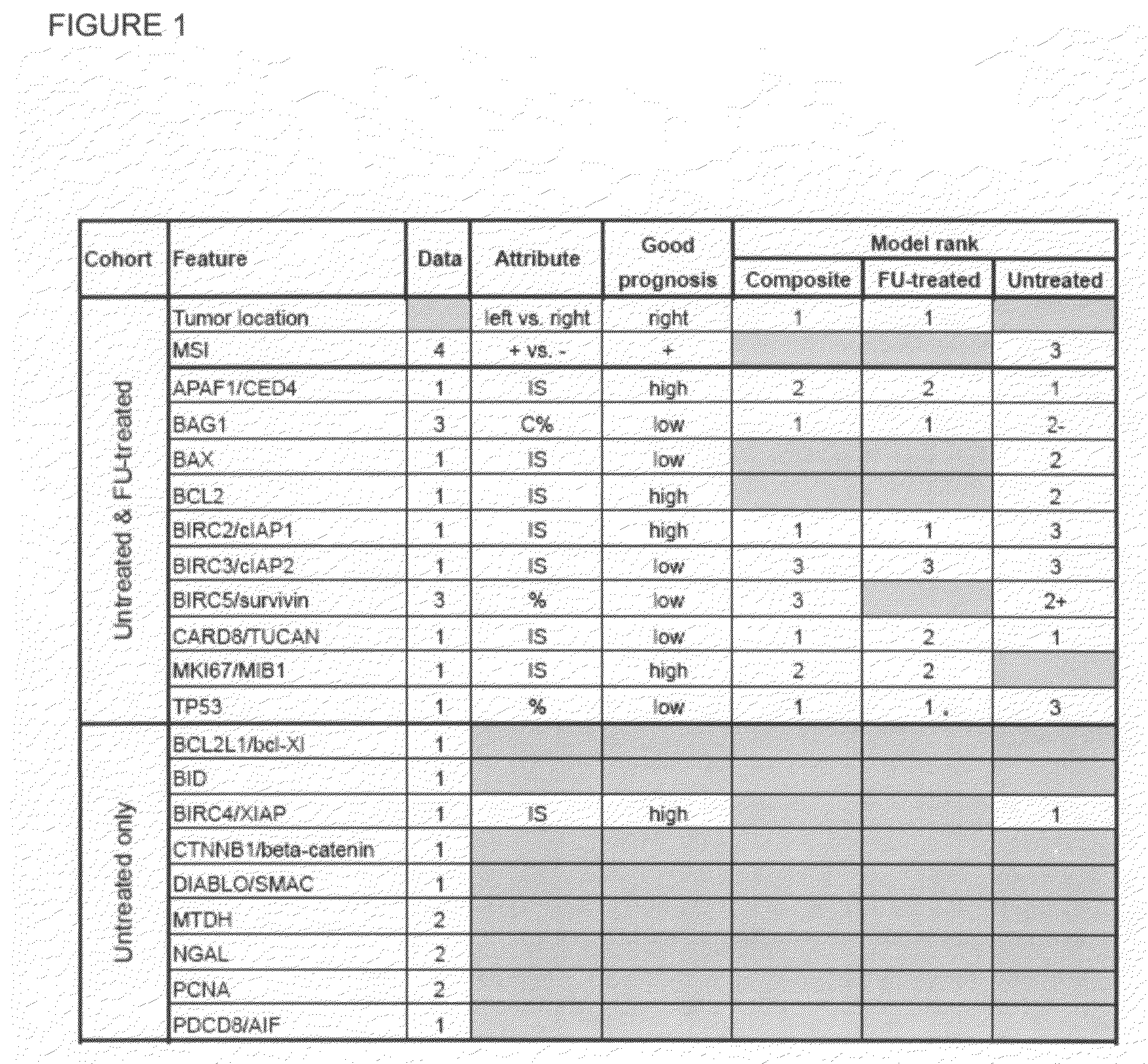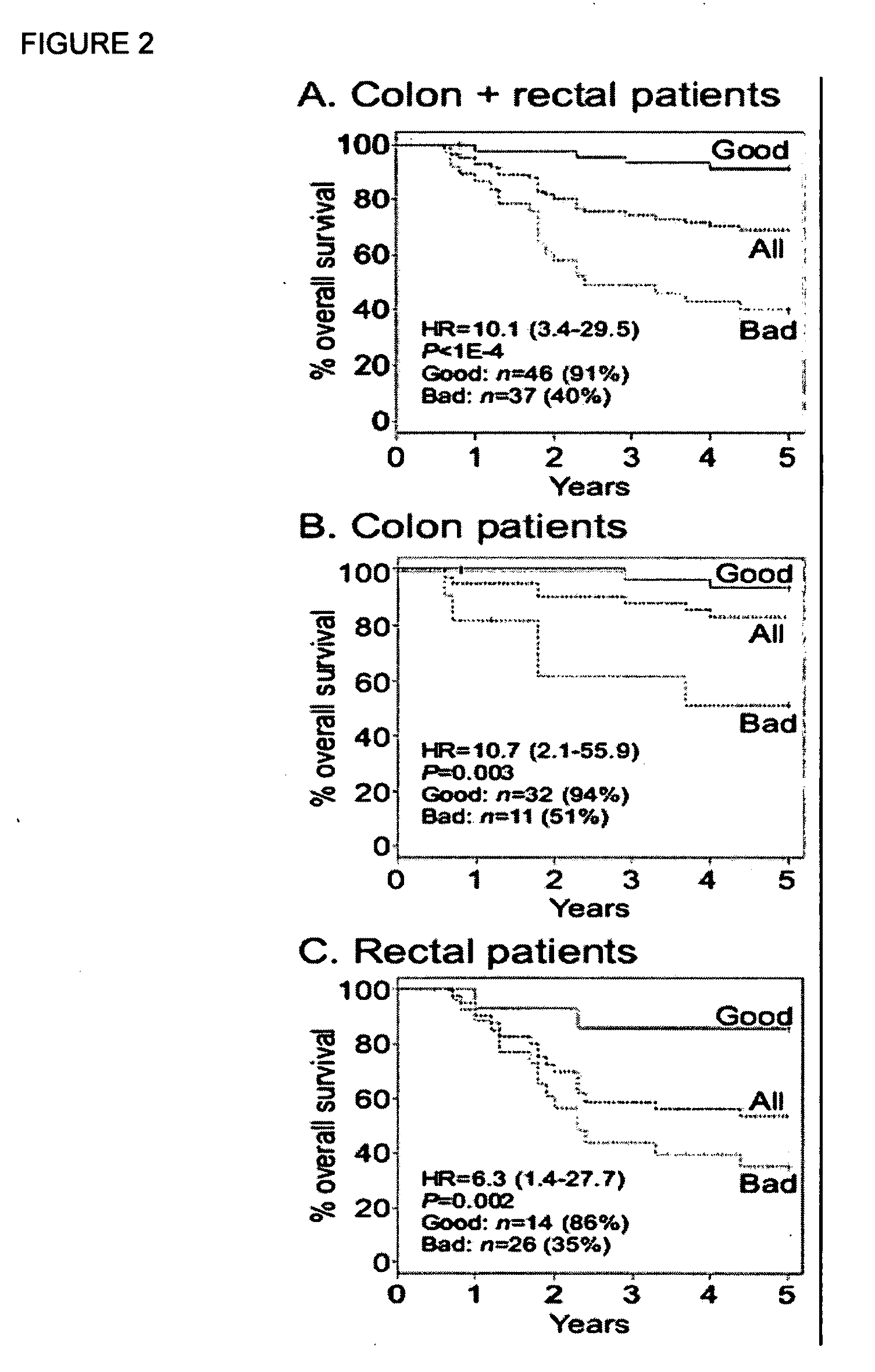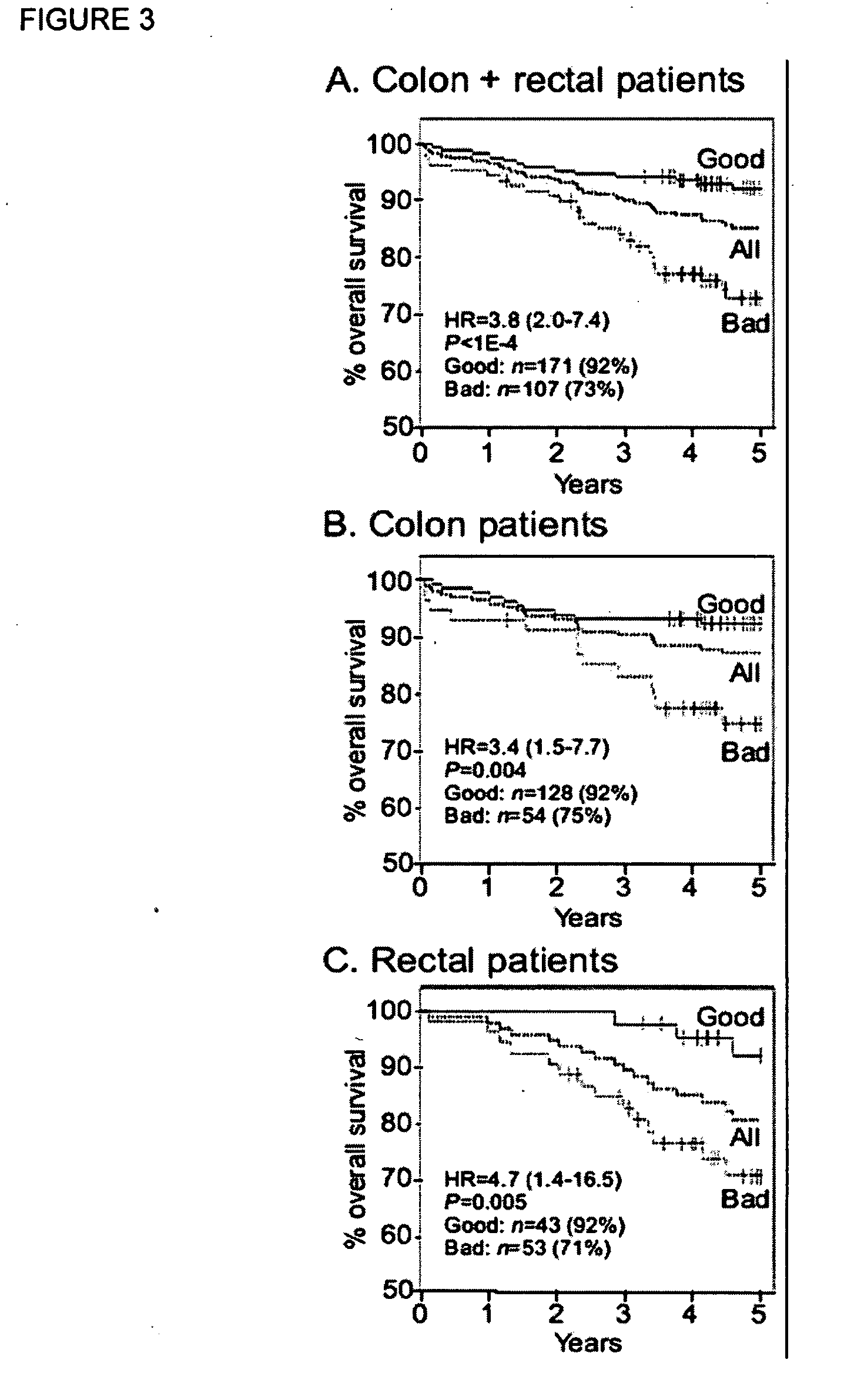Diagnostic markers predictive of outcomes in colorectal cancer treatment and progression and methods of use thereof
a colorectal cancer and outcome technology, applied in the field of prediction of the outcome of adjuvant therapy, can solve the problems of rectal cancer patients with additional risk of local recurrence, inability to provide statistically significant 5-year os benefit of adjuvant chemotherapy, and inability to predict the outcome of adjuvant chemotherapy, so as to prevent the development of chemotherapy resistance, and improve the effect of chemotherapy
- Summary
- Abstract
- Description
- Claims
- Application Information
AI Technical Summary
Benefits of technology
Problems solved by technology
Method used
Image
Examples
example i
Patients
[0122]Specimens for two separate Burnham Institute cohorts were obtained from the Yonsei University Department of Pathology, Soeul, Korea, under Institutional Review Board approval (FIG. 4). All patients were stage II as defined by the American Joint Committee on Cancer. Patients in the untreated cohort (no adjuvant chemotherapy) underwent curative surgery between 1986 and 1996. The patients in the treated cohort underwent curative surgery between 1996 and 1999 and then received a FU-based adjuvant chemotherapy regimen.
[0123]Assays
[0124]For IHC analyses, formalin-fixed, paraffin-embedded samples were cored and arrayed, and 4-mm sections were stained and scored. FIG. 1 contains a list of the molecular markers assayed. Standard IHC staining methods were used and slides were developed with diaminobenzidine (DAB) See Krajewska et al. Analysis of apoptosis protein expression in early-stage colorectal cancer suggests opportunities for new prognostic biomarkers. Clin Cancer Res 11:...
example ii
Methods Providing Input Data to the Mathematical Analysis of the Present Invention
[0127]Analyses were conducted in MATLAB version R13 (The Mathworks, Inc., Natick, Mass.) with the Spider package, and in R with the Survival package. During an initial pre-processing stage, the data were coded and characterized, outcome measures were defined, and standard univariate statistical methods were used to identify potentially key markers. Five-year DFS was used as the outcome measure for the development of the models. Specifically, as a measure suitable for supervised machine learning, patients who remained alive and disease-free for at least 5 years were considered survivors, and patients who died or had a recurrence within 4.5 years were considered non-survivors. The 6-month separation between non-survivors and survivors was included to facilitate the machine learning process. Patients who were alive and disease-free, but who were lost to follow-up within five years, were censored and not u...
PUM
| Property | Measurement | Unit |
|---|---|---|
| mass spectrometry | aaaaa | aaaaa |
| mass-to-charge ratio | aaaaa | aaaaa |
| entropy | aaaaa | aaaaa |
Abstract
Description
Claims
Application Information
 Login to View More
Login to View More - R&D
- Intellectual Property
- Life Sciences
- Materials
- Tech Scout
- Unparalleled Data Quality
- Higher Quality Content
- 60% Fewer Hallucinations
Browse by: Latest US Patents, China's latest patents, Technical Efficacy Thesaurus, Application Domain, Technology Topic, Popular Technical Reports.
© 2025 PatSnap. All rights reserved.Legal|Privacy policy|Modern Slavery Act Transparency Statement|Sitemap|About US| Contact US: help@patsnap.com



